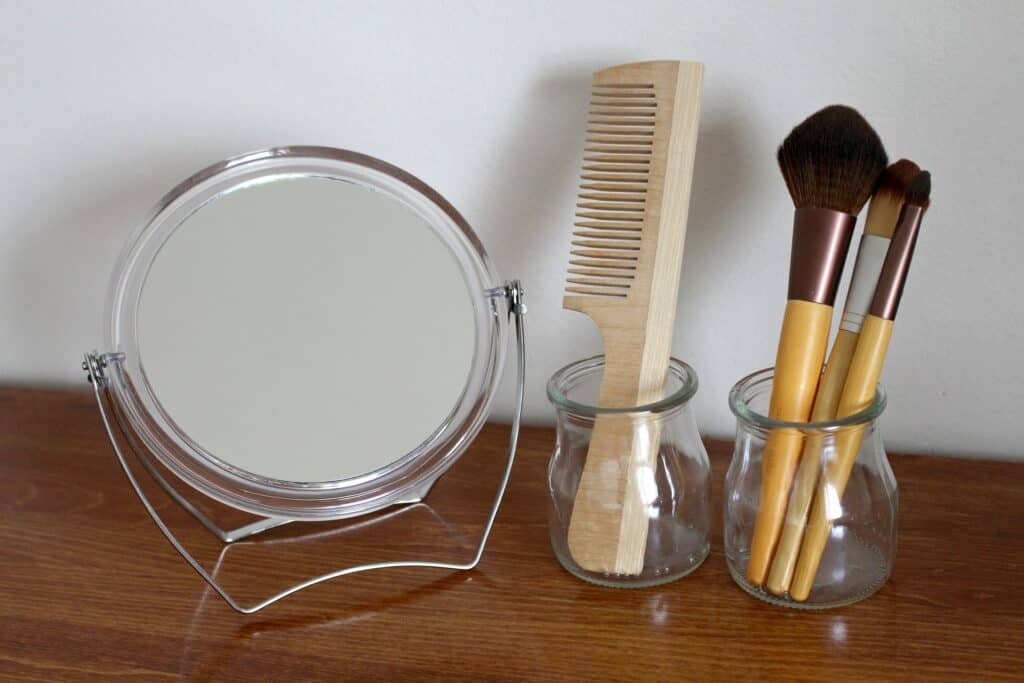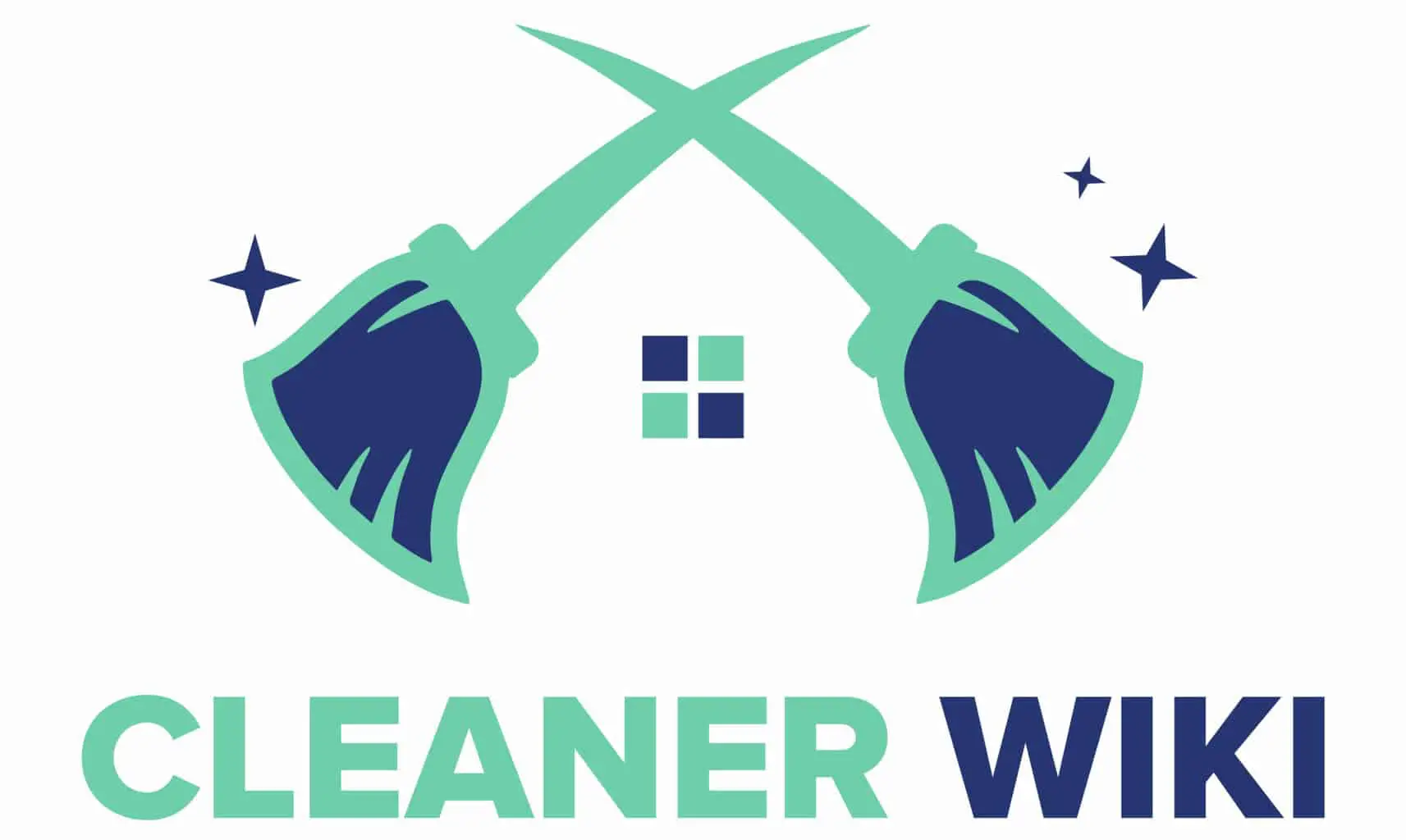As an Amazon Associate we earn from qualifying purchases.
We all want to have great hair, and the comb has been a tool to achieve that goal for as many as 5000 years. Combs are often made of wood because it offers many benefits for the hair, and it is natural and biodegradable.
Woods commonly used to make combs include Cherry wood, Boxwood, Sandalwood, and Neem wood. Cleaning something like a handmade Neem wooden comb is different from cleaning combs made of other materials like non-recyclable plastic, so it’s important to know how to clean a wooden comb to maximize its longevity and durability.
Contents
How to Clean a Wooden Comb
There are two main ways to clean a wooden comb: with water, mild soap, and a little oil, or with only oil. Before cleaning, there are several important things to remember about caring for your wooden comb:
- Beware of wetness: Water can cause swelling or cracking of the wood if overused. Water damage can also cause rough edges. A smooth comb is necessary to prevent hair breakage and for effective styling.
- Store your comb in a place with minimal moisture. A bathroom is a very moist place, so store your comb in a cabinet, a comb sleeve, or a closed container. You might consider storing it in another room that doesn’t have as much moisture like a bathroom.
- Store it away from sunlight or other heat sources. Heat can cause the wood to dry out and eventually splinter, so avoid drying it outdoors.

Whichever method you choose, be sure to do your cleaning regularly to remove dirt and stubborn residue and carefully to maximize the life and benefits of your comb.
Cleaning with Water, Soap, and a Little Oil
We have discussed the fact that water is bad for your wooden comb, but this method utilizes warm water only for a short time period.
If the directions are followed closely, no water damage should occur to your wooden combs.
- Soak your wooden comb for 2-3 minutes in a mixture of warm water and a very mild soap, similar to what you use for cleaning lava beads, silicone ear plugs, and Shungite rocks. You can also add hair oil, olive oil, or other natural oil to this mix. Never soak the comb for more than 3 minutes or it will eventually splinter, so it’s best to prevent swelling and splitting. You can also choose to wash the comb when you’re in the shower if you use it as a detangling comb and skip the soaking. Be sure to keep the wash time to under 3 minutes and follow up immediately with the rest of the steps below.
- Use a clean piece of soft cloth to gently wipe the detangling comb thoroughly to dry it and to remove dirt, build-up, and debris. Be sure to gently wipe between each time. You can also use an old toothbrush or other small brush to scrub it gently and get into the narrow spaces. Stubborn residue from hair products, in particular, can build up in those spaces, so make sure that you don’t miss any areas with your old toothbrush.
- Ensure that the comb is wiped dry completely when you are finished with debris removal, including between the tines. Excess moisture can cause the damage process to start.
- Use a clean piece of soft cloth to coat the comb lightly with hair oil, olive oil, or another natural oil. This will help to protect the wood. It can also prevent the development of bacteria on the comb’s surface. When your wooden comb is new, it’s a good idea to coat it with a little natural oil immediately to start the protection process.
- Let the comb sit on a towel or clean surface and soak up the oil overnight to let the wood absorb all the oil.
- Wipe away any oil that may be left on the surface, and you’re ready to go.
- Store in a dry place away from heat sources. Avoid drying it out outdoors, like your decking.
- Repeat the cleaning process every few weeks.
Cleaning with Oil Only
Some wooden comb owners prefer to skip the water and clean the comb only with a little oil– in fact, they swear by this method!
Cleaning with a little oil removes the risk of water damage completely.

- Wipe the comb thoroughly with coconut oil, olive oil, or hair oil. A little oil can kill germs and prevent bacteria growth. Olive and cotton oil are common choices to clean wooden combs. Many other natural oils will work as well. Choose a little oil that you use on your hair itself or one that you like the scent and texture of. If your wooden comb is a beard comb, then you can use your beard oil. Again, it’s a good idea to coat your comb lightly with coconut oil when it’s new so that it is protected immediately.
- Use a cloth or cotton wool pad to gently remove debris and excess oil from the wood comb. Again, you can also use an old toothbrush or soft brush to clean wooden combs between the tines, but don’t use water. Be sure to remove all debris from the surface of the hair combs.
- Wipe thoroughly after scrubbing and let the hair combs sit and soak up the oil overnight.
- Wipe away any oil that may remain on the surface, and you’re ready to use your comb.
- Store in a dry place away from heat sources.
- Repeat the process every few weeks.
Benefits of Cleaning a Wooden Comb
First, let’s discuss why it’s important to keep your wooden comb clean.
Of course, you want it to look nice and keep its lovely wood color, but there are several other key reasons to clean it regularly.
Removing Grime
Many substances and stubborn residue from your hair can build up on the comb’s surface, particularly between the tines. These substances can include:
- Hair product residue
- Dirt and dust that your hair picks up
- Oil from your scalp
- Any general debris that may land in your hair
If your wooden comb is not clean, you are putting these substances and stubborn residue right back in your hair when you use it.
Having healthy hair begins by having clean grooming tools. You should always maintain proper cleaning of your hair brushes, clips and hair tools. Proper cleaning wooden combs also protect the comb from damage, so that it lasts and works the way you need it to.
Removing Nasty Bacteria and Germs from Wooden Combs
It’s easy for a wooden comb to pick up germs and for bacteria to grow on its surface.

You don’t want these to end up in your hair or on your scalp. Bacteria can lead to many issues, including folliculitis which is caused by the hair follicles becoming infected.
Folliculitis causes bumps or pimples on the scalp, itching, and pain.
Fungal infections can also occur if a fungus comes into contact with the comb and is allowed to grow. Proper cleaning of hairbrushes and wooden combs can eliminate many common causes of hair and scalp issues.
Extending the Life of Your Wooden Comb
A wooden comb can last a lifetime if properly cared for. Wood is a durable material but can be sensitive, so it’s critical to clean your comb properly and prevent damage and wear.
Clean wooden combs are effective for more than just combing your hair. Wooden combs are used as a styling tool to keep hair in place, beard combing, and even nit removal.
Whatever you use it for, cleaning your wooden comb will extend its life. People who use wooden combs love the many benefits they offer in addition to their biodegradability.
Wooden combs reduce hair breakage and have a gentle effect on the scalp that can promote hair growth and blood flow. Wooden combs can also prevent static electricity from developing in your hair. Proper care will allow you to enjoy those benefits for many years without ever needing a replacement.
Final Thoughts
Wooden comb users swear by their benefits. Healthy hair begins with wooden combs that promote that health in many ways. Cleanliness is also essential to healthy hair, which is why cleaning your wooden comb is important.
Wooden combs are wonderful hair tools, but to reap all their benefits, you must clean and care for them properly. If you do you can use your handmade Neem wooden comb for a lifetime!
